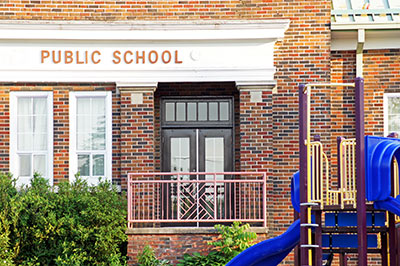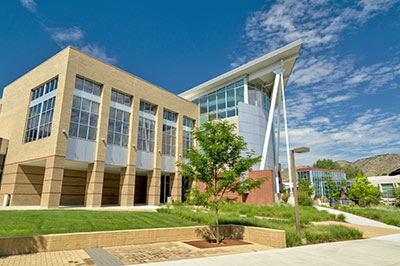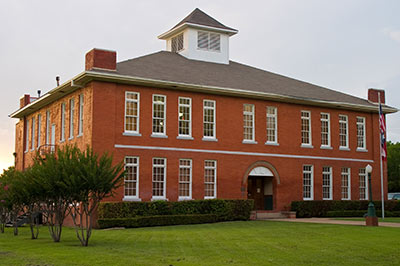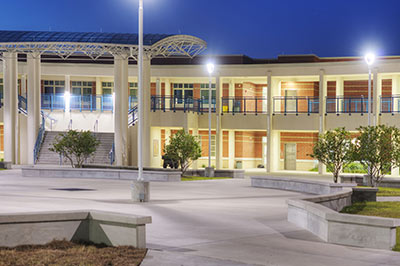By: Dr. G. Victor Hellman, Jr.
Green buildings, green cleaning, school gardens, and green playgrounds are just a few of the prevalent concepts on the mind of education facility planners and many educational administrators. Just what is this green movement all about? How does a school or a district go green? Is there a checklist that lets an administrator know they have reached the goal of a green school? The simple answer to these questions is that a school or district can do as little or as much as they desire. What is important is that they do something. We all must work together to take steps for a greener school. The terms “green” and “sustainability” are often used interchangeably, and these words imply the need for focusing on conserving resources and creating healthy environments for everyone. Green and sustainable facilities typically have lower life-cycle costs and can demonstrate that they are more energy efficient than their non-green counterparts. Lets examine some of the different ways a school or division can go green.
One way a school or division can go green is to construct facilities that are high performing and sustainable or renovate older facilities to bring them up to standard. The United States Green Building Council (USGBC) is not the only organization that recognizes sustainable facilities; however, it is probably the most widely known. The USGBC has established LEED awards for facilities that are considered high performing and sustainable. LEED is an acronym for Leadership in Energy and Environmental Design. While a commitment to a high performance building starts with the owner, it is the design team that includes the components into the new construction or renovation plan to qualify the facility for LEED. There are differing levels of LEED certification depending upon the number of features incorporated into the site and facility. The USGBC recognizes four different levels of LEED: certified, silver, gold, and platinum. The ratings are based on a point system, and facility owners should decide which level of certification they desire before the design or retrofit process begins. While LEED certification may result in higher design and construction costs, incorporating LEED features into a facility will ultimately lower the operational costs over the life of the building. For more information on LEED certification or the USGBC, please visit http://www.usgbc.org/leed .
Another tool to assist in going green is green cleaning. Green cleaning differs from traditional cleaning methods with regard to the solutions and equipment that are used to carry out the cleaning process. The green cleaning process does not utilize toxic chemical-based solutions that have often been used. These cleaning methods have been replaced with solutions such as ionized water. Mops and towels have been replaced with their micro-fiber counterparts. Higher costs and lower efficacy were once cited as reasons not to engage in the green cleaning process. As the solutions and equipment for green cleaning have advanced, these arguments are no longer valid. With the increased efficacy and the minimum or cost-neutral impact of green cleaning, this form of cleaning is something that every school and district should consider. In addition to these considerations, green cleaning is an environmentally friendly alternative to the caustic chemicals used in traditional methods of cleaning. By eliminating the chemical-based cleaners that have been used in the past, there has been a noted decrease in absenteeism from both students and staff. (Issa, Rankin, et.al., 2011) Just as the decision to construct a high performing building rests with the owner, support from the top down to the custodial staff is essential to develop an effective, sustained green cleaning program. For more information on how to initiate a green cleaning program in your school or division, please visit: http://www.efc.gwu.edu//green-cleaning-series/ .
The final consideration for greening a school (although many more exist) that I will put forward is greening the school playground and/or installing an outdoor school garden. Greening the school playground will often incorporate a school garden, so we will discuss them together. One technique to create a green playground is to eliminate the concrete and asphalt and replace the surfaces with artificial turf or a similar product. Another greening method is called a natural playground. Natural playgrounds integrate features such as trees, bushes, and raised flowerbeds with slides, swings, and benches. Natural playgrounds have resulted in a decrease in violent behavior and an increase in attention (Loomis, 2008). A school garden can be beneficial for the instructional curriculum as well as having positive effects in improving other site features such as drainage. Finally, schools that have gardens often use the food they grow in their food service program and can even utilize the crops as a source of revenue.
The United States Department of Education also recognizes the advantages of a school or division going green. On July 20, 2016, the Center for Green Schools and the USGBC recognized 47 schools and 15 districts for their outstanding efforts to go green. In addition to the K-12 honorees, 11 colleges and universities were honored with the Postsecondary Sustainability Award. I had the honor of attending the awards ceremony, and would submit to you that those receiving the awards did not go green for the award; instead they took their actions knowing that they were making a positive impact on our environment and reaping the many benefits of going green for their school community.
References:
Issa, M. H., Rankin, J. H., Attalla, M., & Christian, A. J. (2011). Absenteeism, performance and occupant satisfaction with the indoor environment of green toronto schools. Indoor and Built Environment, 20(5), 511-523.
Loomis, A. (2008). Natural Playgrounds. Sustainable Portland: Implementation Series, 49.
Dr. G. Victor Hellman, Jr., serves as the Research Project Director for the Education Facilities Clearinghouse (EFC). Victor has more than 31 years of work experience in public schools in Virginia. Prior to joining the EFC, he served as Deputy Superintendent of Operations and Support for a mid-urban school district. In that role, he was responsible for finance, facilities, transportation, student services, and food services.









